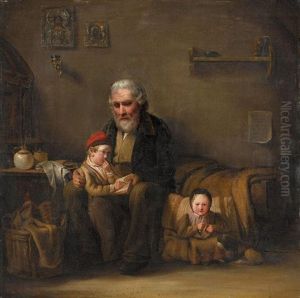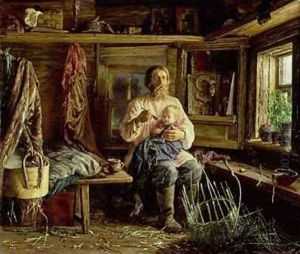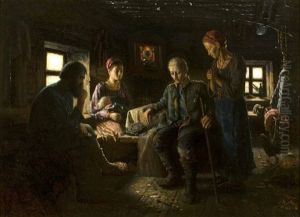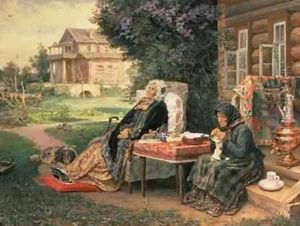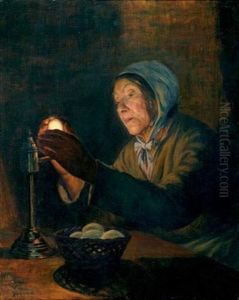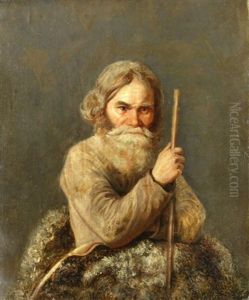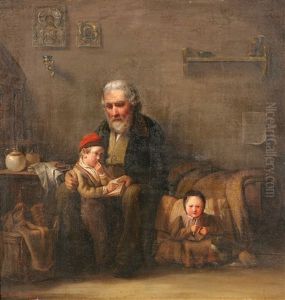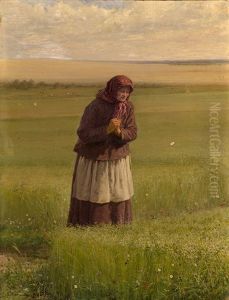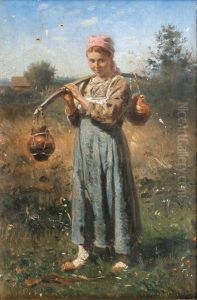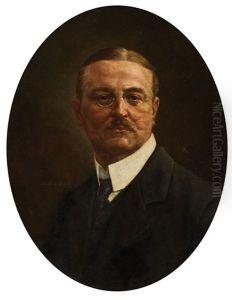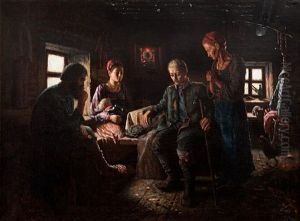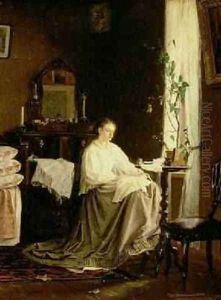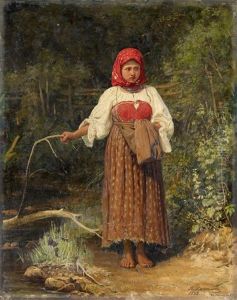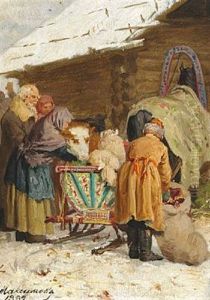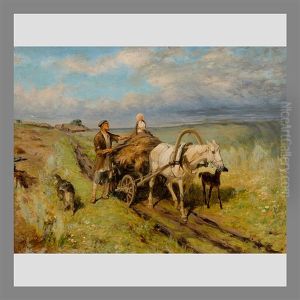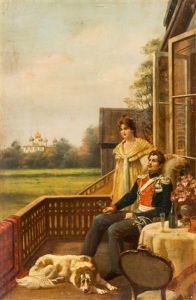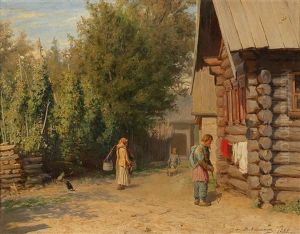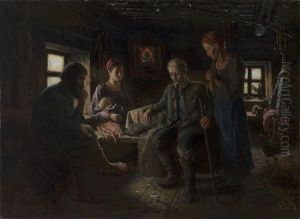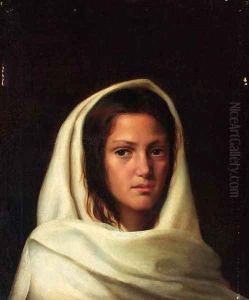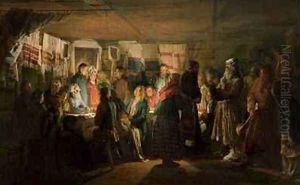Vasili Maksimovich Maksimov Paintings
Vasili Maksimovich Maksimov was a prominent Russian painter associated with the Peredvizhniki (Wanderers or Itinerants) movement, which rebelled against the formalism and academic strictures of the official art establishment in Russia. Born on September 20, 1844, in the village of Lopino in the Novgorod Governorate of the Russian Empire, Maksimov came from a peasant background, which deeply influenced the subjects of his art throughout his career.
Maksimov began his artistic training at the St. Petersburg Academy of Arts at the age of twenty-one, which was relatively late for an artist of his era. He studied under the guidance of Russian realist painters Pavel Chistyakov and Alexei Tarasovich Markov. His early works were marked by a focus on rural life and the peasantry, a theme that would dominate much of his artistic output. The artist sought to depict the real-life conditions, traditions, and emotions of the common people, diverging from the idealized and historical subjects that were popular among many of his contemporaries.
In 1872, Maksimov became a member of the Peredvizhniki, a cooperative of artists who sought to break away from the restrictions of the state-controlled Academy by organizing traveling exhibitions throughout Russia. This movement aimed to engage directly with a broader audience, particularly the middle and lower classes, and to promote social awareness through art.
Maksimov's most famous work, 'The Sick Husband' (1881), is a poignant example of his focus on peasant life. The painting depicts an ailing man being cared for by his concerned wife, capturing the hardship and emotional gravity of rural existence. His works are distinguished by their narrative quality, detailed representation, and the empathy with which he portrayed his subjects.
Throughout his career, Maksimov was recognized for his artistic contributions and was awarded several medals at exhibitions. Despite his successes, he remained true to his roots, often returning to his home village to paint and find inspiration among the peasantry he grew up with.
Vasili Maksimov died on May 23, 1911, in St. Petersburg. His legacy is preserved in his deeply humanistic paintings that offer a window into the life of the Russian peasantry of the late 19th century. His works are held in high regard and can be found in several Russian museums, including the Tretyakov Gallery in Moscow and the Russian Museum in St. Petersburg.
